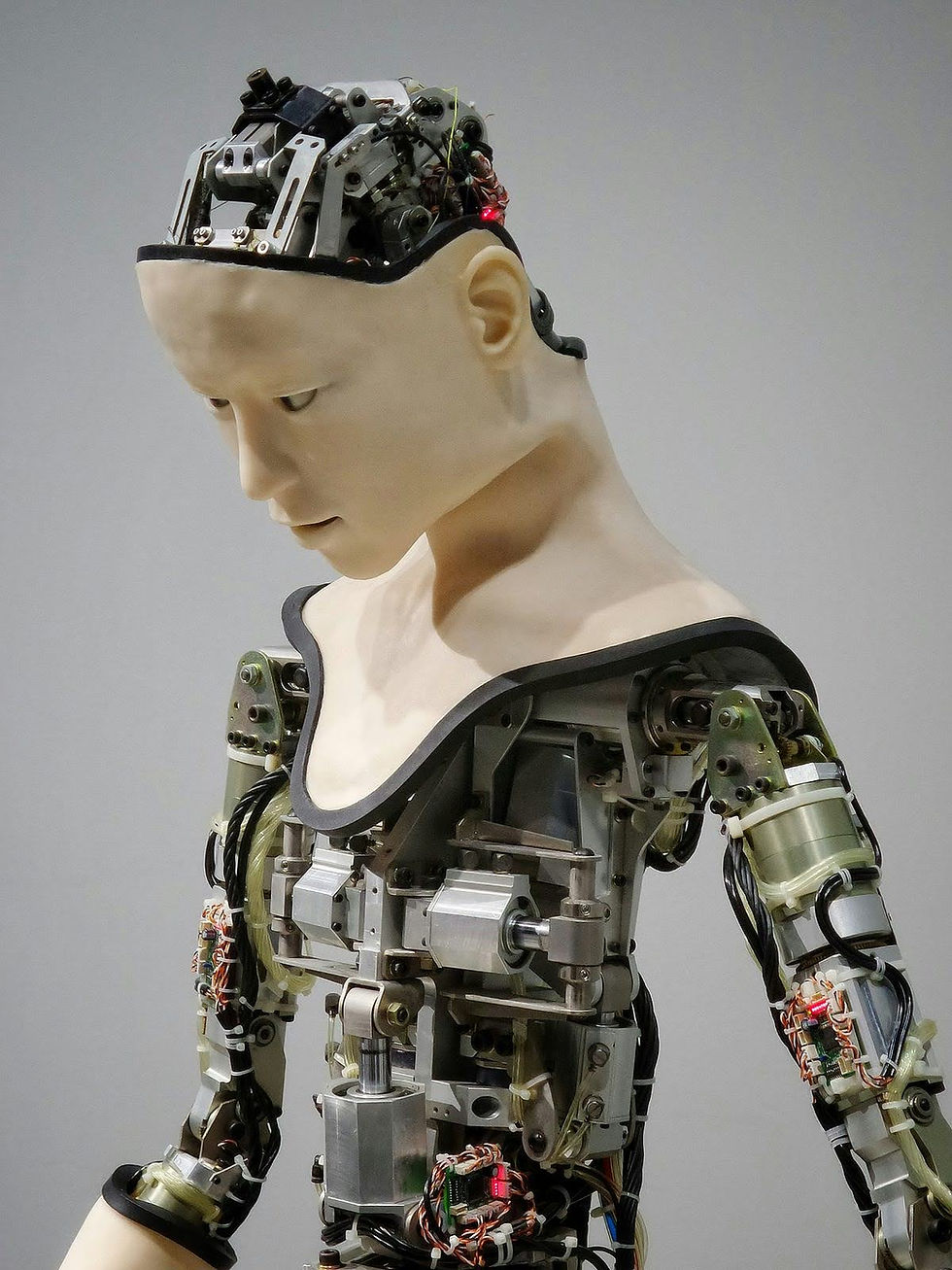AI Proofreading | Can It Replace Proofreading Professionals?
- Melchior Antoine

- Sep 14
- 7 min read
Updated: Sep 17
AI seems to have permeated every aspect of modern living, and this includes AI proofreading. While many people remain skeptical of the promise of AI in terms of its commercial viability, in the world of editing and proofreading, a number of businesses are taking full advantage of AI in their proofreading software. This leaves the question: Is AI proofreading good enough to replace a qualified editing professional?
We can give a short version of the answer here: While LLM-based AI can be impressive, AI proofreading is not yet advanced enough to replace a professional human editor. Several proofreading companies provide the option of AI editing. By AI editing, they simply mean editing using their proprietary software. This includes, just to name a few:
The pricing for their proofreading software is subscription-based. This means you pay every month. In the case of Scribendi, the cost of this software is $4.99 per month. For Wordvice and Scribbr, it can begin as low as $9.95/per month. For QuillBot, their pricing begins as low as $8.33 per month. Now, is this AI proofreading software any good? And by this I mean: Is it good enough to replace actual humans or professional and trained human editors?
Well, it depends. With software and AI, it's a case of garbage in; garbage out. This means the software is as good as the data it is trained on. Training data for this type of software involves feeding them with a huge number of examples of high-quality editing content.
By editing content, I mean the several thousand corrections and suggestions that the hundreds of in-house and freelance editors who work for them carry out on a daily basis. These proofreading companies edit millions of words every year.
The professional editors they hire to edit these millions of words are typically the cream of the crop. This means the data that is used to train their AI models or proofreading software is high-quality. As a result, these models tend to be more fit for purpose than alternatives such as Grammarly.
However, since most of the data that they are trained on is related to academic writing, this software is more appropriate for scholarly documents rather than blogging. Lastly, these proofreading software tools are typically designed for use by professionals, with a few exceptions, such as QuillBot.
They help professional editors edit faster and more efficiently. In my personal opinion, they are not yet at the stage where a layman can rely solely on proofreading software without professional assistance. AI proofreading rates are much lower than those paid to human editors.

Therefore, the AI option might seem tempting. If you are a content marketer or manager with a team of professional editors, check out these tools to determine how well they serve or complement your editors and how they can be incorporated into your company's writing-editing workflow. This approach would make more sense than relying on these tools alone.
If you are a student, these tools should not be seen as a shortcut to doing things the right way, that is, studying and completing assignments on time. You should continually study the basic rules of English grammar and usage. The way most of these software tools work is that they make recommendations, and you have the option of accepting or rejecting them. In short, these tools are only as good as the person using them. If you are not knowledgeable enough to know if a suggestion is correct enough, you may end up with a document riddled with errors.
AI proofreading business copy vs. academic documents
Most of the available online proofreading companies focus on academic documents and academic writing. The AI proofreading software that they have available normally excel in editing documents related to academia. It is often assumed that if they are competent enough in academic editing, then they should be more than good enough to edit content writing. However, this may not be a completely safe assumption.
For content marketing, the aim is to sell. In academic editing, the aim is to publish in academic journals or pass college-related academic assignments. So an important consideration should be tone. The tone in an academic document should be:
Formal
Serious
Intellectual
However, in content writing, the tone is more conversational. You may even have to ignore and violate language rules such as proper punctuation and using strictly standard English. This is especially true for short-form copy for landing pages, service pages, and advertisements. Grammarly seems to be ideal for business writing or content writing, but it is not appropriate for more academic work.
AI proofreading of fiction
Literary or fiction editing differs drastically from content editing and academic editing. With content editing, the focus is on achieving business or sales goals. With academic editing, the goal is making sure you submit a paper or manuscript that meets specific and rigorous academic guidelines. With literary editing, it is much different.
The goals are much more intangible. Your literary editor is more or less tasked with the responsibility of critically analyzing your work and making recommendations. They need to be familiar with the specific literary genre that you are writing in. They also need to be familiar with a range of other aspects of works of fiction, such as:
Proper character perspective
Effective use of literary devices
Avoidance of excess in writing through purple prose
Proper execution of tone and mood
Balancing text with subtext
The avoidance of tropes and cliches
Therefore, we can say that the work of a literary editor has more nuance and subtlety than other types of editing. This means that AI proofreading would have much more difficulty in editing literary work, and it would be much more safe to rely on a qualified human editor for that purpose.
Using ChatGPT as an AI proofreader
ChatGPT should be avoided as an AI proofreader at all costs. ChatGPT is an LLM-based software. LLM stands for large language models. This means that ChatGPT has been trained on all the information available on the Internet. And remember what we said earlier: garbage in; garbage out.
Most of the information that is available on the Internet is low-quality to begin with. This means that the results from LLM-based software are not always reliable. LLMs have also become notorious for their hallucinations, where they just make up information.
So you might think the results given sound awesome, especially because ChatGPT answers with such high levels of confidence. However, this may be the furthest from the. Any editing software designed specifically for editing and proofreading would be a better option than ChatGPT.
Proofreading AI-generated content
There is also the question of how to copyedit AI-generated content or what to expect of copyeditors working on copy that has been produced by AI. Most content marketers and managers have resorted to producing content using AI. In the case of academic editing, this is somewhat ironic.
The biggest criticism of AI-produced content is that it sounds like badly written academic content. This means that you really ought to be sure that the editing services that you are getting know the difference between the appropriate tone and style for academia versus sales-based copy or content.
There are several advantages to relying on AI-generated copy. It's fast. It's cheap. It's easy. More than that, it can help you scale content relatively quickly. However, it comes with certain setbacks. AI-generated content is still at the developmental stage. The setbacks of generating copy with AI include:
Hallucinations
Lack of originality
Robotic tone of voice
Hallucinations mean that ChatGPT and other AI-generated content make things up. Lack of originality means that generative AI simply relies on content that has been published on other sites and sums it all up to create something new, but not necessarily unique.
Lastly, ChatGPT remains a big dumb robot. It operates like a robot. It talks like a robot. It writes like a robot. Its tone of voice or ToV simply does not sound human. People will instinctively be turned off by content that does not sound natural or written by a human.
Therefore, if you are a content manager or entrepreneur who deals with AI-generated content for your website, you will have special demands from your copyeditors. Copyediting for AI-generated copy should focus on fact-checking to deal with hallucinations.
It also needs a unique perspective to combat the lack of originality. Lastly, your copyeditor has to be skilled enough to edit content to make sure that the tone of voice or ToV is natural and can create an emotional connection with the reader.
Most of these editing companies seem to lack this unique service. They even offer software to humanize content. However, the idea of a robot being used to rectify the ToV of what another robot produced sounds like a disaster in the making.
At EminentEdit, our editors and proofreaders have experience writing using AI-generated software, as well as experience editing such software. We know both the pros and cons of relying on AI-produced content. And we know exactly how to use human editing to bridge the gap between these pros and cons.
Get in touch for help in editing your content |
How EminentEdit can help with editing your work
EminentEdit provides high-quality proofreading services for both business-related content and students at affordable rates. Check out our pricing to see how we balance low costs with high value.
AI proofreading is useful, but the deft human touch is still needed, and this is what we offer at EminentEdit. Our proofreading and editing prices start as low as $0.03/word:
Type of Editing | Description | Price Per Word ($) |
Regular Editing | Line-by-line editing to improve tone and sentence structure. | $0.03 |
AI Editing | Editing to improve tone and fact-checking. | $0.05 |
AI Editing Without Fact-Checking | Editing to improve tone and to humanize. | $0.02 |
Regular Proofreading | Editing to uncover and fix minor grammar, punctuation, and style errors. | $0.02 |
Our copy editing services don't just start with copy editing the final product. It also includes help from the very beginning of your project. Take a quick look at all what we cover:
Proofreading and editing for theses and dissertations
Reviewing and correcting long-form blog copy
Reviewing and correcting short-form copy
Correcting AI-generated content
Get in touch with one of our representatives: CONTACT US AT EMINENT EDIT.
Cite this EminentEdit article |
Antoine, M. (2025, September 14). AI Proofreading | Can It Replace Proofreading Professionals? EminentEdit. https://www.eminentediting.com/post/ai-proofreading |



